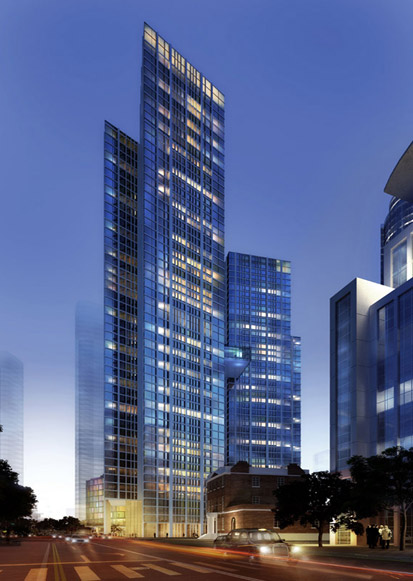MONTHLY BLOG 19, IN PRAISE OF PUBLIC INFORMATION, AND DISPRAISE OF SUGARED PUBLIC RELATIONS
If citing, please kindly acknowledge copyright © Penelope J. Corfield (2012)
On the subject of accuracy, there’s no doubt that concerned citizens need access to good public information. But how can we get it straight? Without the sugared gloss of PR?
Take the artists’ illustrations that are commonly presented as part of the brief for controversial planning developments. These pictures are so unreal that one immediately smells a large Rat.
The proposed new development is always shown in summer, under blue skies – sometimes dotted with a few puffs of light, high clouds. The people in sight are predominantly young, comely, and Anglo-Saxon. At most they hold light bags and perhaps a styrofoam cup of coffee. There are no prams, no shopping trolleys, no wheel-chairs in sight. No older people. No babies. No skate-boards or any signs of children having fun. If there is a road, there are perhaps one or two cars and a reassuring bus – but no congestion (and hence, by implication, no air pollution).
Very rarely the proposed high-rise buildings appear to have shadows that might fall upon any adjacent properties. Or, if they do, then such darkened areas are lightly, almost apologetically, shaded.
Above all, when the proposed new buildings are disproportionately tall in a low-rise area, then the illustrations either focus upon a trendy new piazza at the foot of the tall building; or look at it from a distance – say across a river, sparkling blue in the summer sunshine. A night-time view is taken with all lights glittering, perhaps across the river. No hint of the under-occupied buildings which result, looking bleak with deserted streets at ground level.
There is no real sense of how such proposed buildings might fit into a wider area. How they are viewed from afar, affecting the views of countless people who are not consulted over the proposed changes.
There is no sense of how the development will look at different times of year and in different climatic conditions. What about wet February afternoons as well as sunny June days?
Talking of climatic effects in particular, there is no consideration of the potential for wind funnels. People daily experience the mini-gales that swirl around at the feet of high-rise buildings, especially in exposed areas such as sites by the riverside. But somehow it is assumed that such invisible costs must never be mentioned. Depressingly, almost all architectural studies of wind effects and high-rise buildings concentrate on the impact of wind upon the buildings themselves but not upon the wider locality. A sad sign of how the individual structures are given priority over the urban landscape and environment as a whole.
Developers promise more one- and two-bedroom flats. How does that relate to housing demand locally? What about families? What percent of the single-bed and two-bedroom flats recently built along the Wandsworth riverside are empty for some or all of the year? We are not told in the public planning brief. Offices are to be provided. Is London short of offices? No documentation is provided. They promise more retail outlets. How does that relate to the growth of on-line buying and the crisis of small shops in town centres? Especially in the light of the Portas Report, which has just won promises of support for existing town centres – while the so-called planning process is undermining them daily.
Continuing the litany of questions: where are the community facilities, such as a hall which is available for public use and private hire? There is no mention of libraries or schools, because the lop-sided community without families will not need such things.
And lastly, why do the promised public green spaces at the feet of these developments seem so dispiriting? Are the amenities actually amenable? Will people want to use them? Are they central to the plan or add-ons to allow some green colouring on the plans? Will these places be free from overshadowing and wind blight? Who will maintain them, keeping them free from litter and vandalism? Needless to say, detailed reports on many aspects of every planning application are promised, including a ‘Placemaking Strategy’. But how often do such documents critique the basic application? The fear is that reports have pre-judged the issue in advance. And that over-development of a site for short-term expediency risks being preferred over long-term planning, even while the deleterious results of hasty over-development last for a long, long time.
There are so many other forms of public information, which turn out to be nothing more than PR exercises, about which much more could be written. But enough for now. Just have a look at the following illustration, which is attached to the current planning application for ‘One Nine Elms’, next to Vauxhall station.
 This illustration flatters the proposed Market Towers. The sky is deep blue, shading to lighter sky and lights at ground level. The Towers seem to cast no shadows. The surviving Grade I listed building at their feet (centre R) is merged into the background, foretelling its coming obscurity. The traffic at a major traffic interchange is strangely reduced to give the picture harmony. The struggling commuters battling through the wind funnel at the feet of high-rise buildings by the exposed riverside don’t exist. Bah! Humbug! And … more anon.
This illustration flatters the proposed Market Towers. The sky is deep blue, shading to lighter sky and lights at ground level. The Towers seem to cast no shadows. The surviving Grade I listed building at their feet (centre R) is merged into the background, foretelling its coming obscurity. The traffic at a major traffic interchange is strangely reduced to give the picture harmony. The struggling commuters battling through the wind funnel at the feet of high-rise buildings by the exposed riverside don’t exist. Bah! Humbug! And … more anon.
For further discussion, see Twitter
To read other discussion-points, please click here
To download Monthly Blog 19 please click here









